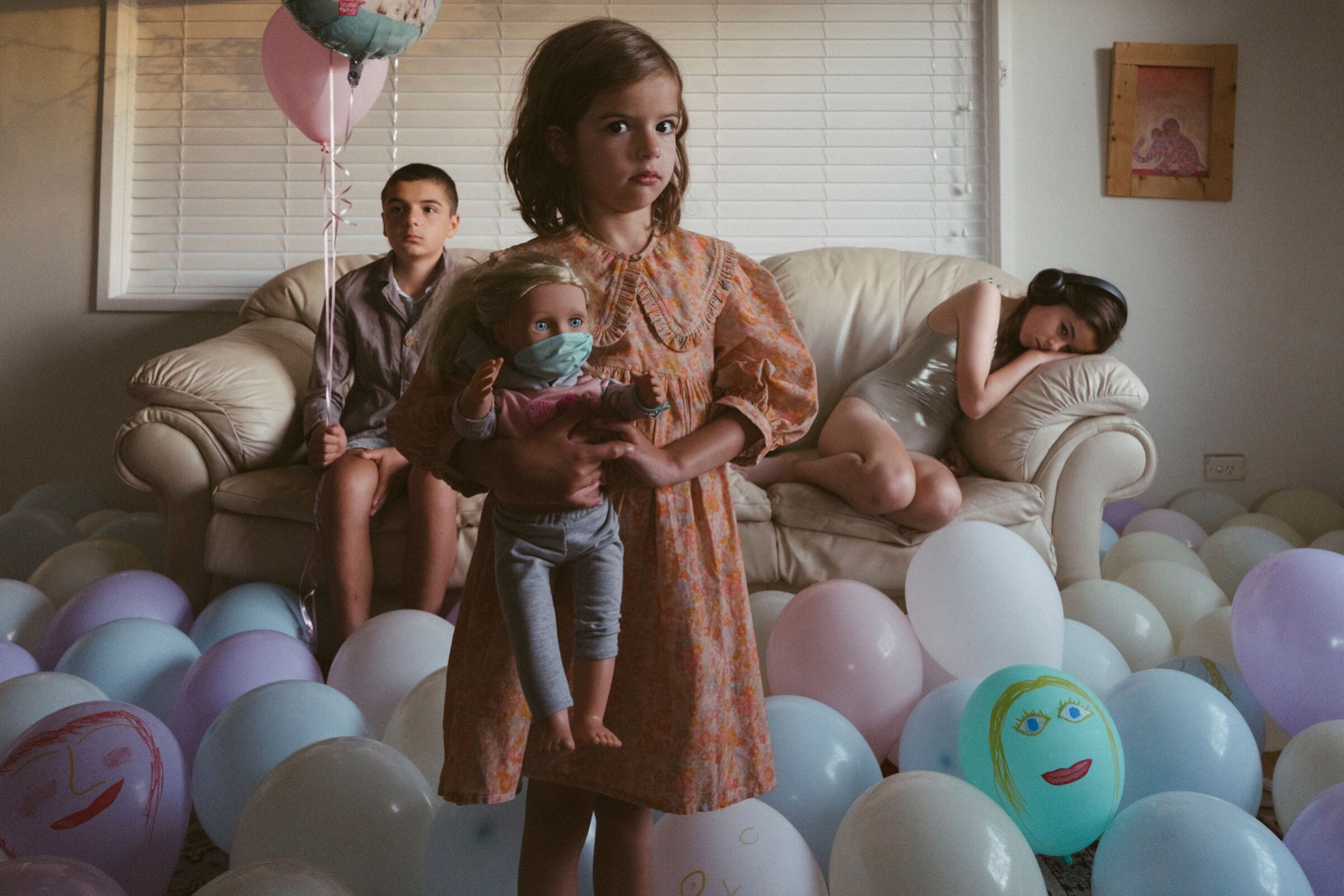GORDON HOOKEY: A MURRIALITY surveys thirty years of the Waanyi artist’s vibrant, satirical and iconic practice. While Hookey’s multidisciplinary practice spans sculpture, installation, text and time based media, his large-scale paintings are the centrepiece of this show, their idiosyncratic figures, gradients and slogans flooding the space with a unique combination of grandiose scale and fine, mesmerising detail.
While not strictly displayed in chronological order, A MURRIALITY tracks Hookey’s development as both an artist and an activist, with the earliest works containing elements of what would become mainstays of Hookey’s unique visual vernacular. Upon entry, we are introduced to early paintings from 1994 and 1995, wherein Indigenous Australians are depicted as flora and fauna. In Xanthorrhoea takes over the suburban backyard (1995), Hookey reflects post-referendum white anxiety over the increasing visibility and voice of Indigenous peoples. Xanthorrhoea plants, colloquially known as ‘Black Boys,’ are seen re-claiming the manicured lawns of a Sydney home. On the same wall hangs Untitled (1994), depicting police officers as anthropomorphised pigs. Hookey would go on to expand this metaphor of mastheads of colonialism and other figures of illegitimate authority as destructive and introduced species, to this day depicting politicians and police officers as pigs, toads and sheep. As the exhibition notes, these works also illustrate the early influence of Black Panther Emory Douglas on Hookey’s visual language, in turn situating Hookey’s practice within a long standing and global tradition of provocative and powerful artist-activists.
Slippery boundaries between pictorial and experiential space emerge in the second room of A MURRIALITY as visual puns and propositions seem to fall off the canvas and into the room via sculptural elements. These include a set of “bible-bashing boxing gloves,” adorned with studs for extra impact, and a punching bag with a second set of gloves emblazoned with the Aboriginal flag. These sculptural elements are propositions to the audience: what do we do with the information we are given, with Hookey’s insights and provocations?
The use of text is central to Hookey’s practice. English language conventions dictate politics, law, and academia, and play a sly hand in the challenge of being heard and respected in the world of fine art. In response, the artist bends, plays with and subverts the English language via visual puns, phonetic text, signwriting, and calls to action. Through this utilitarian use of text, Hookey draws attention to how racism and prejudice is smuggled into society through the guise of “proper English, challenging the hierarchical use of English in so-called Australia.
Hookey uses painting in the same way he uses English, with agency and utility. This shared approach to art and language converges in his New Commission works for A MURRIALITY. A significant number of works in the exhibition are new commissions by the Institute of Modern Art and the University of New South Wales. These new works get to the heart of Hookey’s practice, distilling and displaying what is true of Hookey’s oeuvre. They comprise eight non-functional protest banners, each responding to local and global contemporary issues with the wit, brutal honesty, dark humour and playfulness that we have come to expect.
The change in materials in this latest series, from oil paint and quality canvas to fast-drying acrylics and cheap tarpaulin dismantles the concept of “proper” materials in order to access the agency of a work of art. The protest-banner format lends social immediacy to these works and allows the viewer to consider how works of art may be used: they are portable, multi-dimensional, re-arrange-able, cheaply made, loud and imperfect. While the visual language and subject matter of these banners remain true to Hookey’s nature, their forms suggest an ability to escape the confines of the art museum.
In A MURRIALITY, Hookey demonstrates a deep understanding and activation of the agency of art, showing the audience that paintings are both capable of representing acts and may be considered acts themselves. The acts of Hookey’s paintings break down pre-conceived notions of what is “proper” to communication, to language, to paintings in a gallery in order to present new possibilities, promote critical thinking and foster community and resilience. Hookey’s work is laden with dark humour, satire and critique, however these works aren’t nihilistic or bitter; they are full of resistance and solidarity and are genuinely hopeful, activated, and future-facing.
Molly Smith is a multidisciplinary artist and writer living and working in Meanjin.








